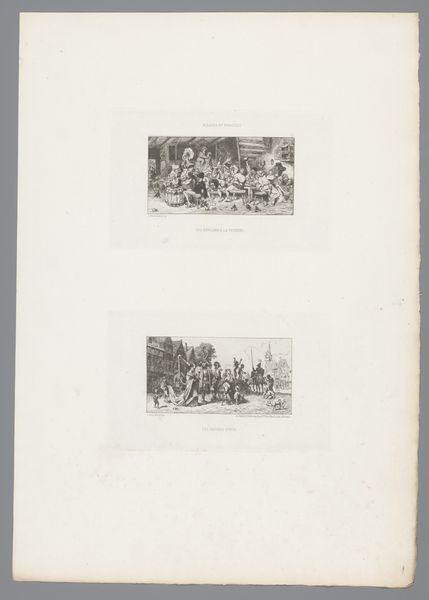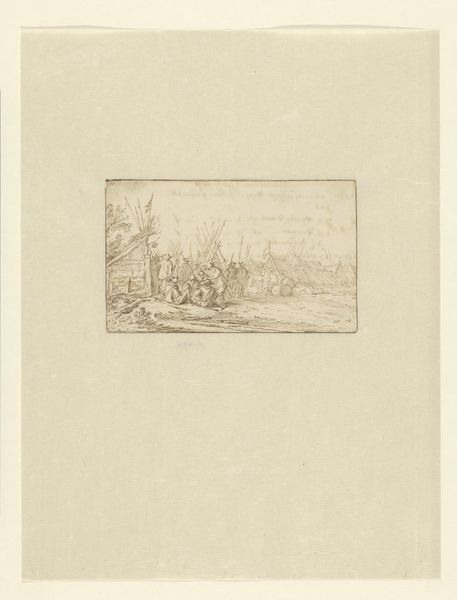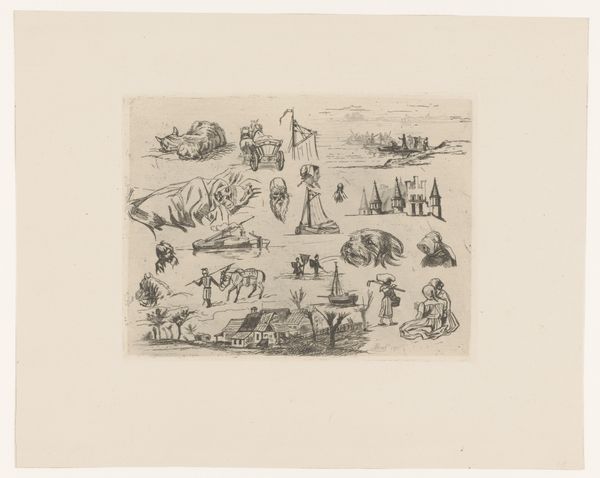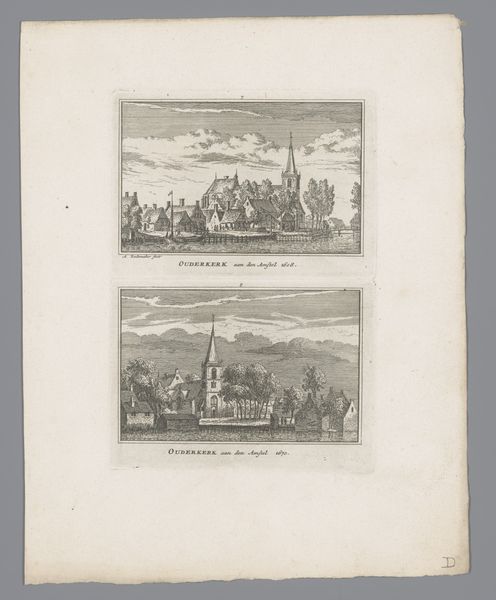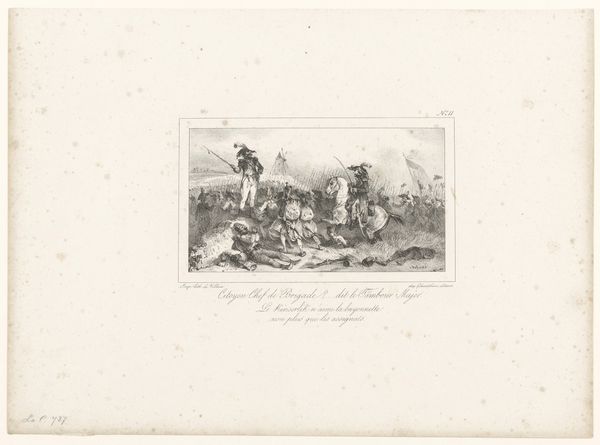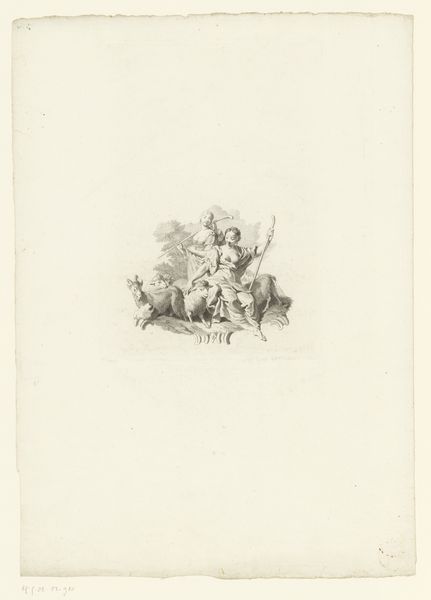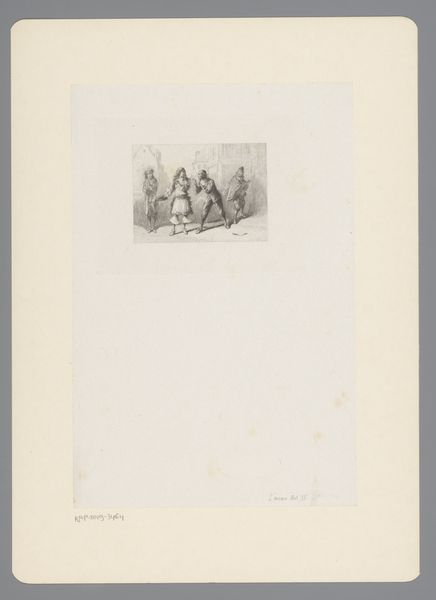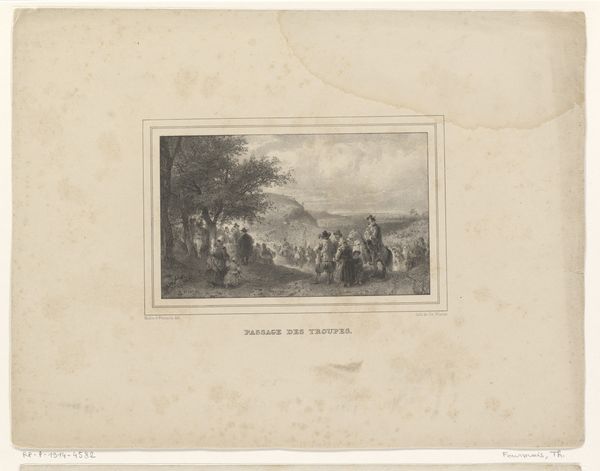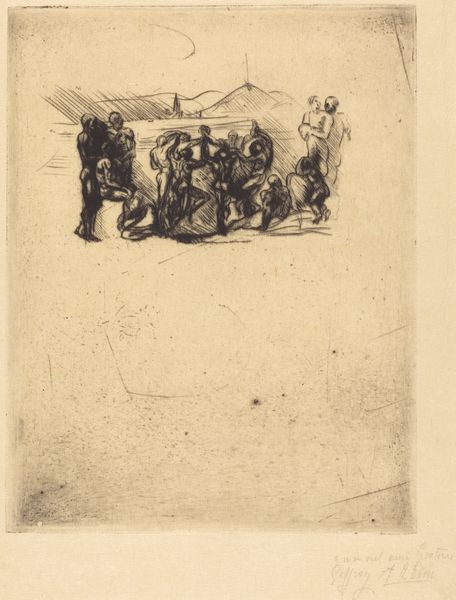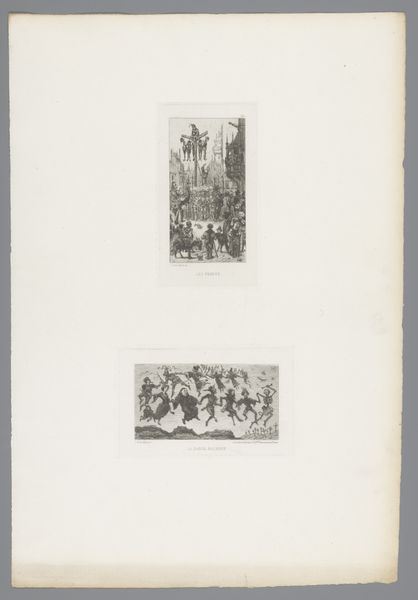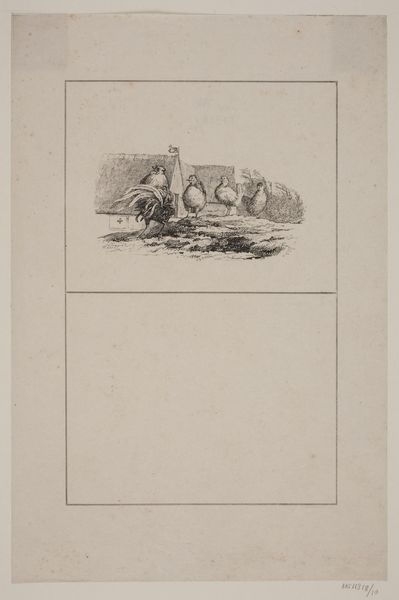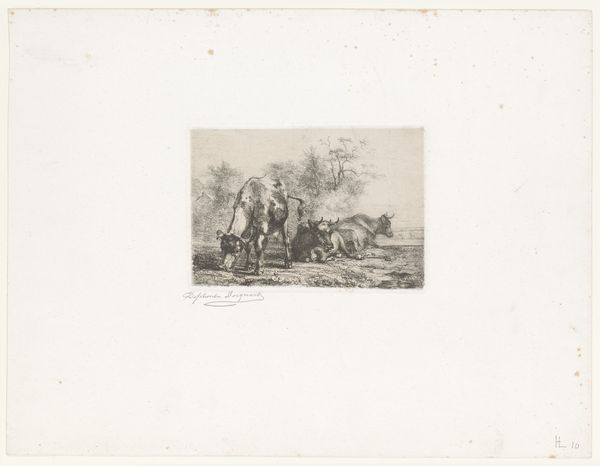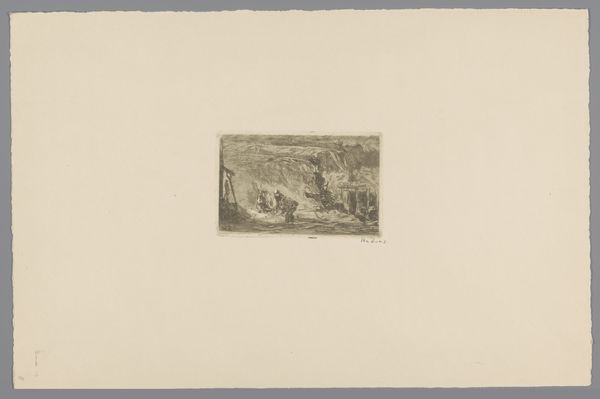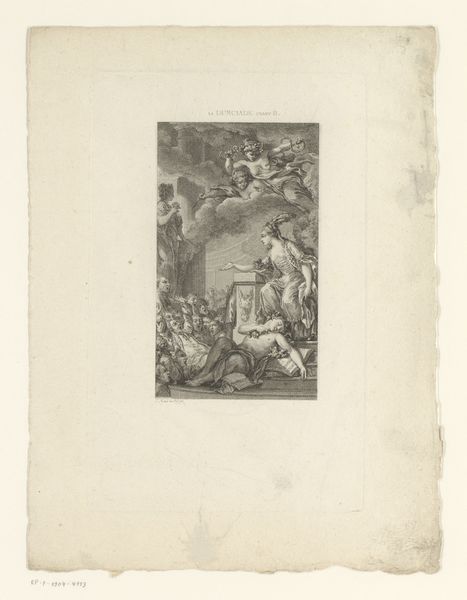
drawing, print, etching, paper, engraving
#
drawing
#
16_19th-century
# print
#
etching
#
landscape
#
paper
#
romanticism
#
engraving
Dimensions: height 322 mm, width 244 mm, height 47 mm, width 98 mm, height 85 mm, width 60 mm, height 46 mm, width 104 mm
Copyright: Rijks Museum: Open Domain
Editor: This is "Drie voorstellingen", or "Three Scenes", by Johann Caspar Nepomuk Scheuren, made in 1842. It’s an etching, engraving, and print on paper, all rather small. My first impression is one of distance… Everything is tiny, like looking through the wrong end of a telescope. What do you see when you look at this, from your expert perspective? Curator: It reminds me of memory itself, the way fragments linger. Scheuren presents us not with grand, sweeping statements but with these almost dreamlike vignettes. What stories might they hold, these little gatherings, this castle nestled in the trees? There is something charming in the antiquated aesthetic, though. I wonder what draws Scheuren to portray these scenes together on a single sheet, seemingly disparate. Editor: Maybe it’s a collection of sketches? A visual notebook, almost? I love the detail he gets, even in these small formats. But what is this supposed to say to us? What unites it beyond material and style? Curator: Perhaps the connection lies in the theme of community and place. The people seem linked by shared activity or purpose in each setting, but also each scenario has its setting within the landscape. It gives a kind of narrative unity across what at first seem like unrelated topics. Does that resonate with you at all? Editor: It does, actually. That feeling of interconnectedness... I hadn't thought of it like that. Seeing them as parts of a larger story or world, like different chapters. Curator: Exactly! And that, my dear student, is the beauty of art – it’s always speaking if we allow our ears and eyes to really perceive its voice!
Comments
No comments
Be the first to comment and join the conversation on the ultimate creative platform.
